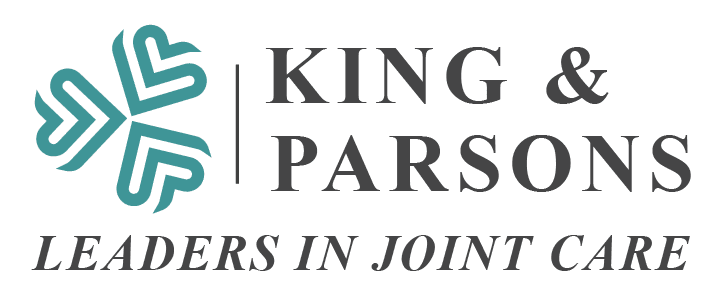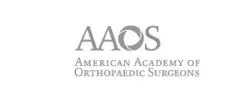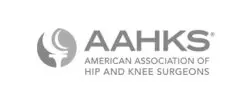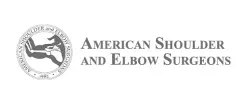Read complete study: Computer navigation re-creates planned glenoid placement and reduces correction variability in total shoulder arthroplasty: an in vivo case-control study
The incidence of shoulder arthroplasty continues to increase, and this has brought continued innovation in preoperative planning and implant design. Concurrently, with improved imaging techniques, our understanding of pathologic changes that affect the joint have begun to elucidate strategies to address glenoid wear. Durability of the glenoid implant remains the weak link of shoulder arthroplasty,2,10 and both clinical and biomechanical studies have demonstrated that excessive residual retroversion or inclination,7,9 excessive corrective reaming,4,5 recurrent humeral subluxation6 and insufficient implant contact1 with bone are all risk factors for component loosening or failure. While augmented anatomic and reverse glenoid implants are now widely available, their use remains fairly limited relative to the frequency of pathologic wear. Guidelines on their use have also yet to be established, and a surgeon’s ability to accurately place such implants in cases with significant to extreme glenoid wear are uncertain. Prior cadaveric studies examined surgeon accuracy in recreating a preoperative plan using conventional instruments with free-hand techniques. The studies demonstrated significant variability and an average error of + 6-10° relative to the planned correction.11 This indicates that “eyeballing” glenoid implant placement may lead to significant variation from the plan. Particularly in cases of moderate to severe pathologic wear, such as the Walch B2 or B3 glenoid. This inaccuracy can be the difference between long-term durability and mid-term failure.
CT-based preoperative planning is now widely available and increasingly popular as it allows surgeons to virtually plan implant selection and placement and optimize parameters such as correction of inclination and version, peg placement in the glenoid vault, backside contact and amount of corrective reaming. While this can provide a very quantitative method of glenoid reconstruction, planning alone does not guarantee proper bone preparation or implant placement without additional technology to assist surgeons in replicating the plan. While patient-specific instrumentation (PSI) can improve the accuracy of implant placement over free-hand techniques, it still has a margin of error of + 4° on average.3,12 As studies have shown increased stresses in the cement mantle over 10° of residual version, this amount of error could potentially lead to pathologic implant malposition. Furthermore, PSI does not allow surgeons to adjust the plan intraoperatively if needed.
The ExactechGPS® surgical navigation system offers surgeons a true triple threat solution for shoulder reconstruction: 1) CT-based preoperative planning; 2) a portfolio of augmented glenoid implant options; and 3) a real-time, adjustable, intraoperative navigation tool with a high degree of precision. Validation studies have demonstrated improved accuracy of version and inclination correction within 2° of the surgical plan. This system uses trackers to register the patient’s anatomy with the CT scan. A tracker attached to the reamer and drill allows surgeons 3D visualization of glenoid surface preparation according to the preoperative plan and drill location for optimal peg and screw placement.
The authors found that the use of surgical navigation resulted in the use of twice as many augmented glenoid implants indicating that planning allows a more quantitative recreation of native version and inclination.
A recent study by Nashikkar, et al. sought to demonstrate the utility and accuracy of GPS in a comparative study of anatomic and reverse shoulder arthroplasty using preoperative planning with ExactechGPS versus conventional techniques without preoperative planning.8 The authors found that the use of surgical navigation resulted in the use of twice as many augmented glenoid implants indicating that planning allows a more quantitative recreation of native version and inclination. Surgical navigation also resulted in a statistically significant higher proportion of implants being placed in neutral version with a significant reduction in variation from neutral. This indicates that GPS not only facilitates a more accurate reconstruction but also a higher level of consistency and reproducibility between cases. In this same review, nearly 50% of surgically navigated cases had perfect replication of the plan based on postoperative CT measurement of implant position compared to the preoperative plan.
This study effectively provides clinical confirmation of the cadaveric validation studies of the improved accuracy of real-time surgical navigation. It shows that surgical navigation can significantly reduce the percentage of implants placed outside of the ideal planned position. While correlation of navigation with outcomes and survivorship data remains an area of active research, enough is known about the conditions under which glenoid implants may experience premature loosening and failure that one can surmise an implant placed with better alignment and fixation is more likely to resist failure assuming an optimal humeral reconstruction and soft tissue envelope. Current research is underway to prove this hypothesis along with additional research on machine learning tools that may help surgeons determine the preoperative plan that best predicts successful and durable outcomes.
References:
- Bitzer A, Rojas J, Patten IS, Joseph J, McFarland EG. Incidence and risk factors for aseptic baseplate loosening of reverse total shoulder arthroplasty. J. Shoulder Elbow Surg. 2018 Dec;27(12):2145–2152. doi:10.1016/j.jse.2018.05.034
- Bohsali KI, Wirth MA, Rockwood CA. Complications of Total Shoulder Arthroplasty. J. Bone Jt. Surg. 2006 Oct 1;88(10):2279–2292. doi:10.2106/JBJS.F.00125
- Cabarcas BC, Cvetanovich GL, Gowd AK, Liu JN, Manderle BJ, Verma NN. Accuracy of patient-specific instrumentation in shoulder arthroplasty: a systematic review and meta-analysis. JSES Open Access. 2019 Oct;3(3):117–129. doi:10.1016/j.jses.2019.07.002
- Chen X, Reddy AS, Kontaxis A, Choi DS, Wright T, Dines DM, et al. Version Correction via Eccentric Reaming Compromises Remaining Bone Quality in B2 Glenoids: A Computational Study. Clin. Orthop. 2017 Dec;475(12):3090–3099. doi:10.1007/s11999-017-5510-7
- Clavert P, Millett PJ, Warner JJP. Glenoid resurfacing: what are the limits to asymmetric reaming for posterior erosion? J. Shoulder Elb. Surg. Am. Shoulder Elb. Surg. Al. 2007 Dec;16(6):843–848. doi:10.1016/j.jse.2007.03.015
- Collin P, Herve A, Walch G, Boileau P, Muniandy M, Chelli M. Mid-term results of reverse shoulder arthroplasty for glenohumeral osteoarthritis with posterior glenoid deficiency and humeral subluxation. J. Shoulder Elbow Surg. 2019 Oct;28(10):2023–2030. doi:10.1016/j.jse.2019.03.002
- Laver L, Garrigues GE. Avoiding superior tilt in reverse shoulder arthroplasty: a review of the literature and technical recommendations. J. Shoulder Elbow Surg. 2014 Oct;23(10):1582–1590. doi:10.1016/j.jse.2014.06.029
- Nashikkar PS, Scholes CJ, Haber MD. Computer navigation re-creates planned glenoid placement and reduces correction variability in total shoulder arthroplasty: an in vivo case-control study. J. Shoulder Elbow Surg. 2019 Jul;S1058274619302873. doi:10.1016/j.jse.2019.04.037
- Nyffeler RW, Werner CML, Gerber C. Biomechanical relevance of glenoid component positioning in the reverse Delta III total shoulder prosthesis. J. Shoulder Elbow Surg. 2005 Sep 1;14(5):524–528. doi:10.1016/j.jse.2004.09.010
- Papadonikolakis A, Neradilek MB, Matsen FA. Failure of the Glenoid Component in Anatomic Total Shoulder Arthroplasty. J. Bone Jt. Surg. 2013 Dec 18;95(24):2205–2212. doi:10.2106/JBJS.L.00552
- Sadoghi P, Vavken J, Leithner A, Vavken P. Benefit of intraoperative navigation on glenoid component positioning during total shoulder arthroplasty. Arch. Orthop. Trauma Surg. 2014 Dec 2;135(1):41–47. doi:10.1007/s00402-014-2126-1
- Villatte G, Muller A-S, Pereira B, Mulliez A, Reilly P, Emery R. Use of Patient-Specific Instrumentation (PSI) for glenoid component positioning in shoulder arthroplasty. A systematic review and meta-analysis. PloS One. 2018;13(8):e0201759. doi:10.1371/journal.pone.0201759
To learn more about our shoulder surgery options, here.















